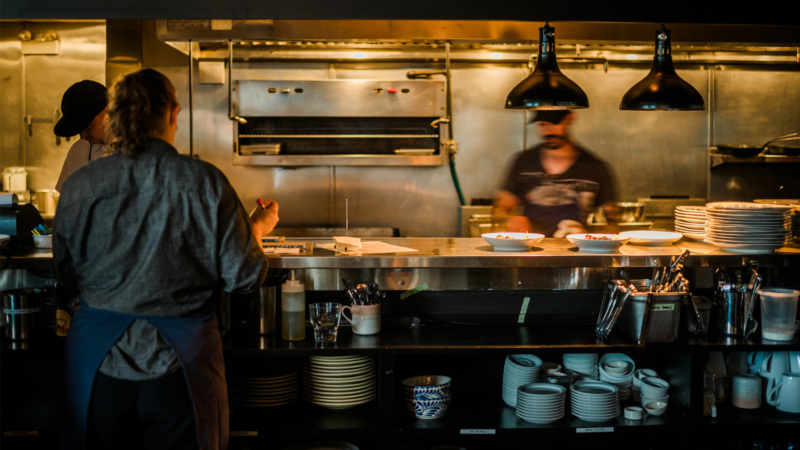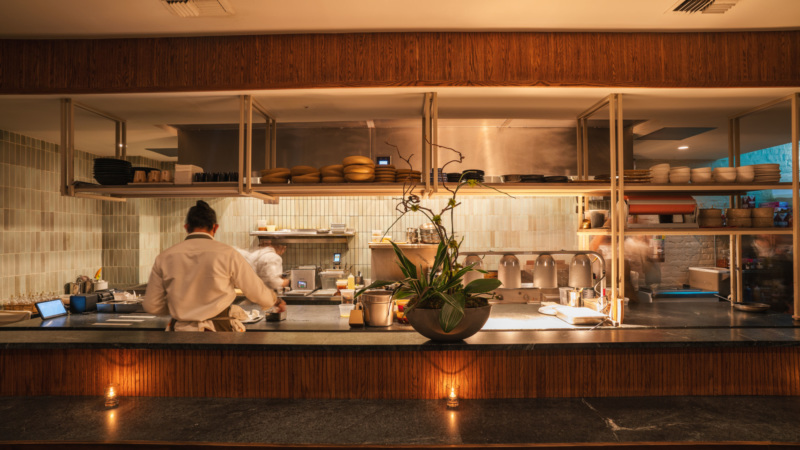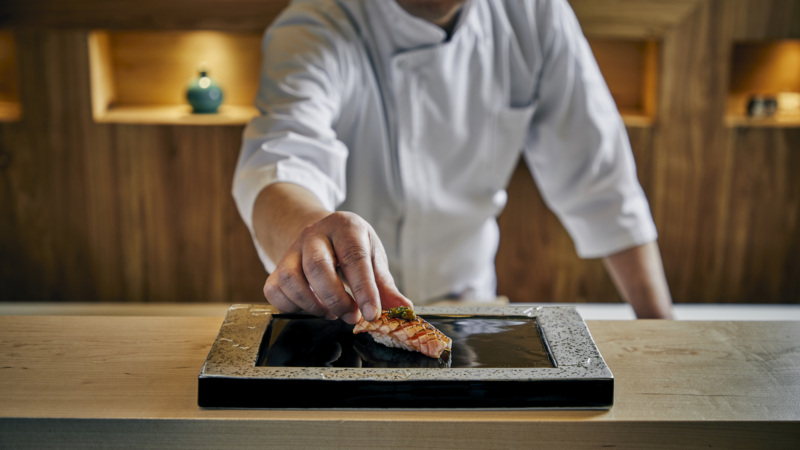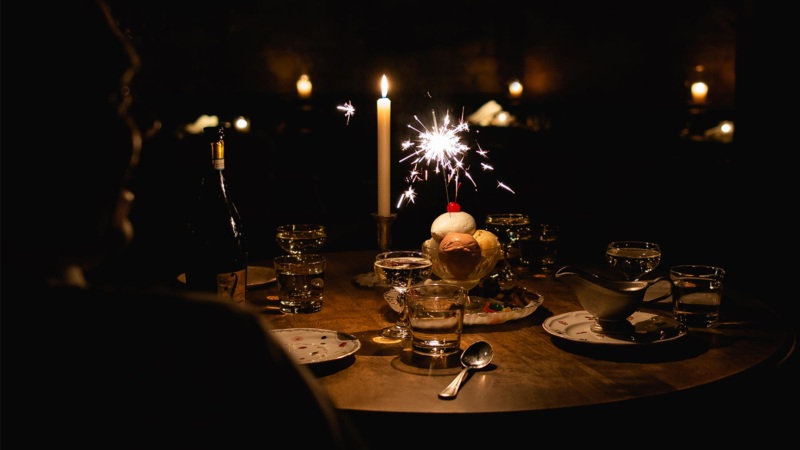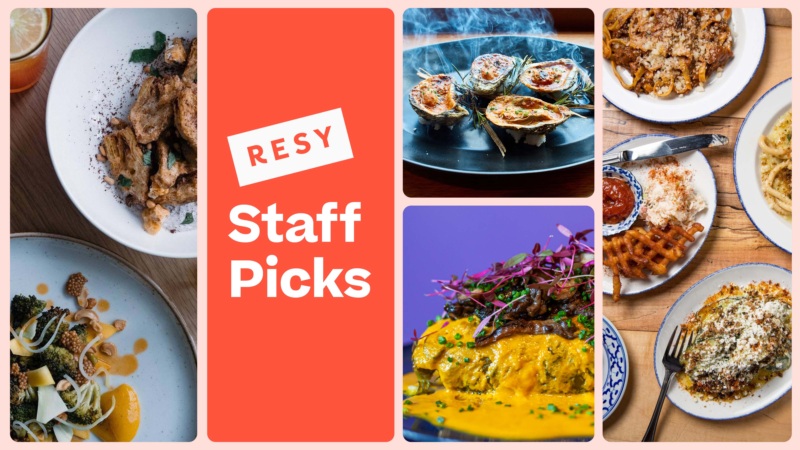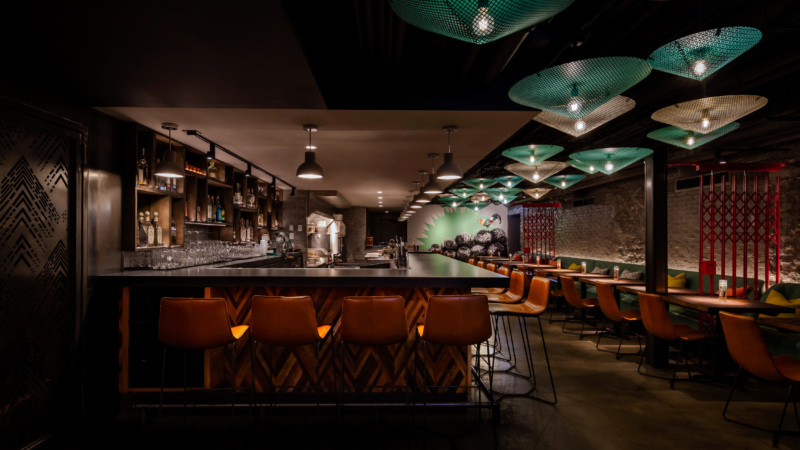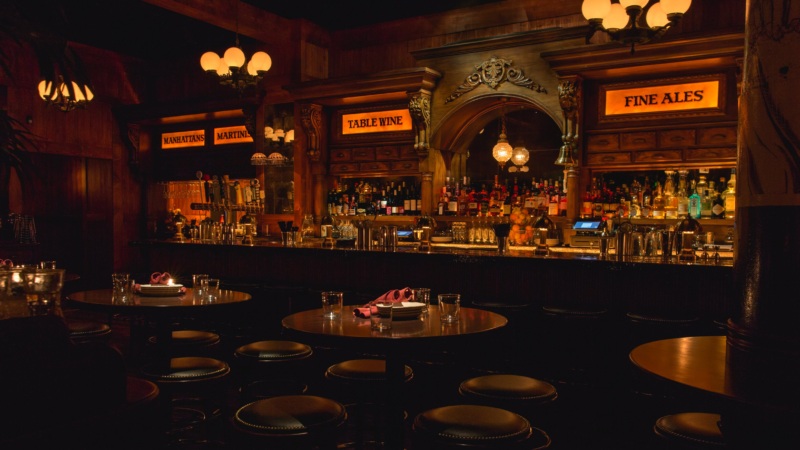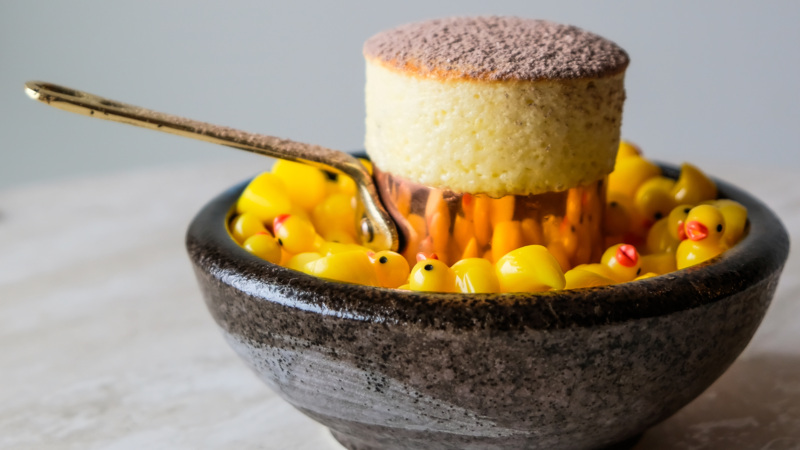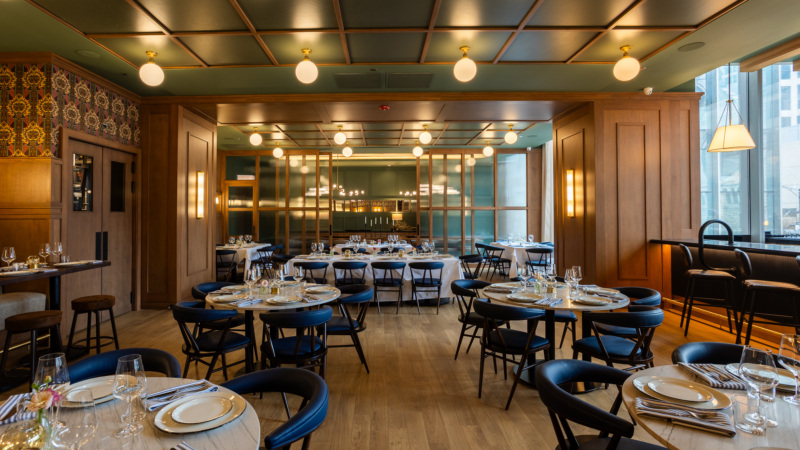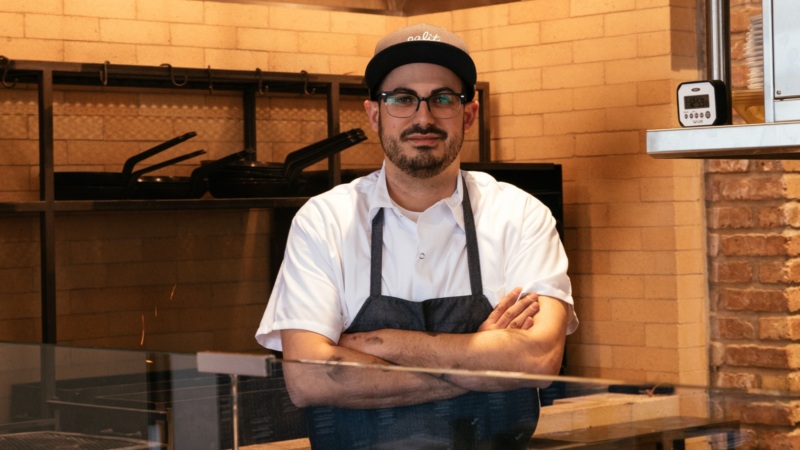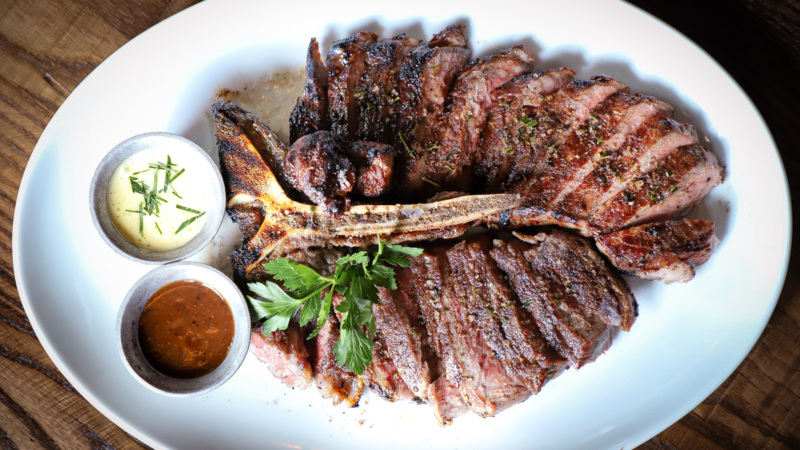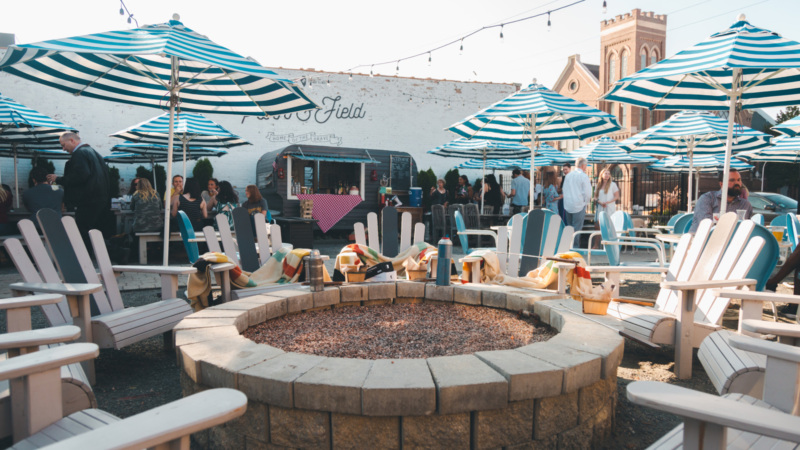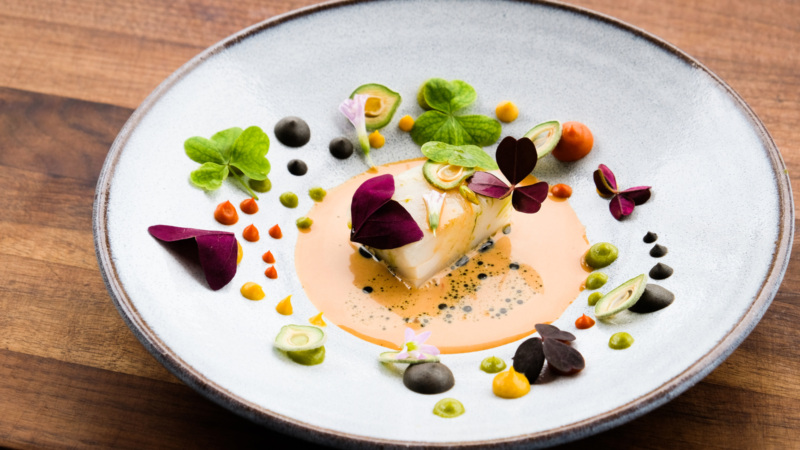
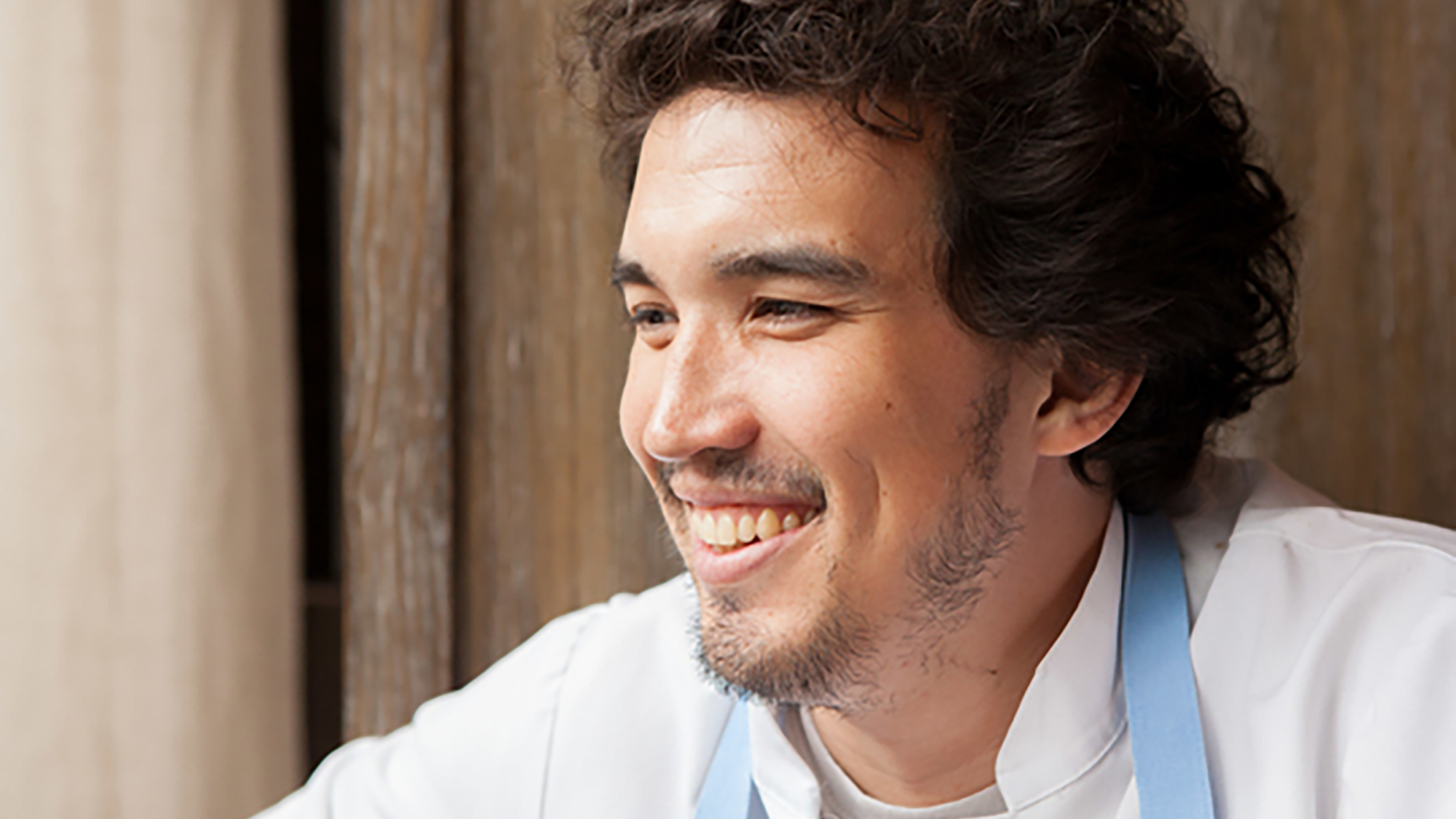
15 Questions with Pacific Standard Time’s Erling Wu-Bower
Erling Wu-Bower, nominated three times over by the James Beard Foundation for Best Chef: Great Lakes, is a Chicago chef through and through. He was born in South Bend, Indiana; bred in the Windy City; and spent the formative years of his career cooking at avec, The Publican, and Nico Osteria—some of the city’s most beloved culinary institutions. So, it came as a surprise to some when it was announced that his next endeavor would be called Pacific Standard Time, and the cuisine would stem from California. The funny thing is, it actually makes a lot of sense. We caught up with the chef to get the inside scoop on his latest concept and hear how things have been rocking since the doors opened in early May.
Resy: You’ve been open for just over a month now. How’s it been so far?
Erling Wu-Bower: It’s been great. It’s going incredibly well. It’s been busy, I’m satisfied with the food—and I’m never satisfied with the food—but considering how young we are, I’m satisfied with the food. Staffing, which is usually a bit of a head-scratcher, is still a head-scratcher. But yeah, I don’t have too much to complain about.
Have there been any big surprises?
I’ve essentially been [opening restaurants] to some extent for 10 years, so I feel like I have most of the surprises down. There have been some good surprises [with this project]; I can say I’m satisfied and slightly surprised with how busy it’s been. Usually, it takes a little while for the word to get out there. We’re jamming, which is great. I’m not surprised, but I’m really happy with how well my team has come together.
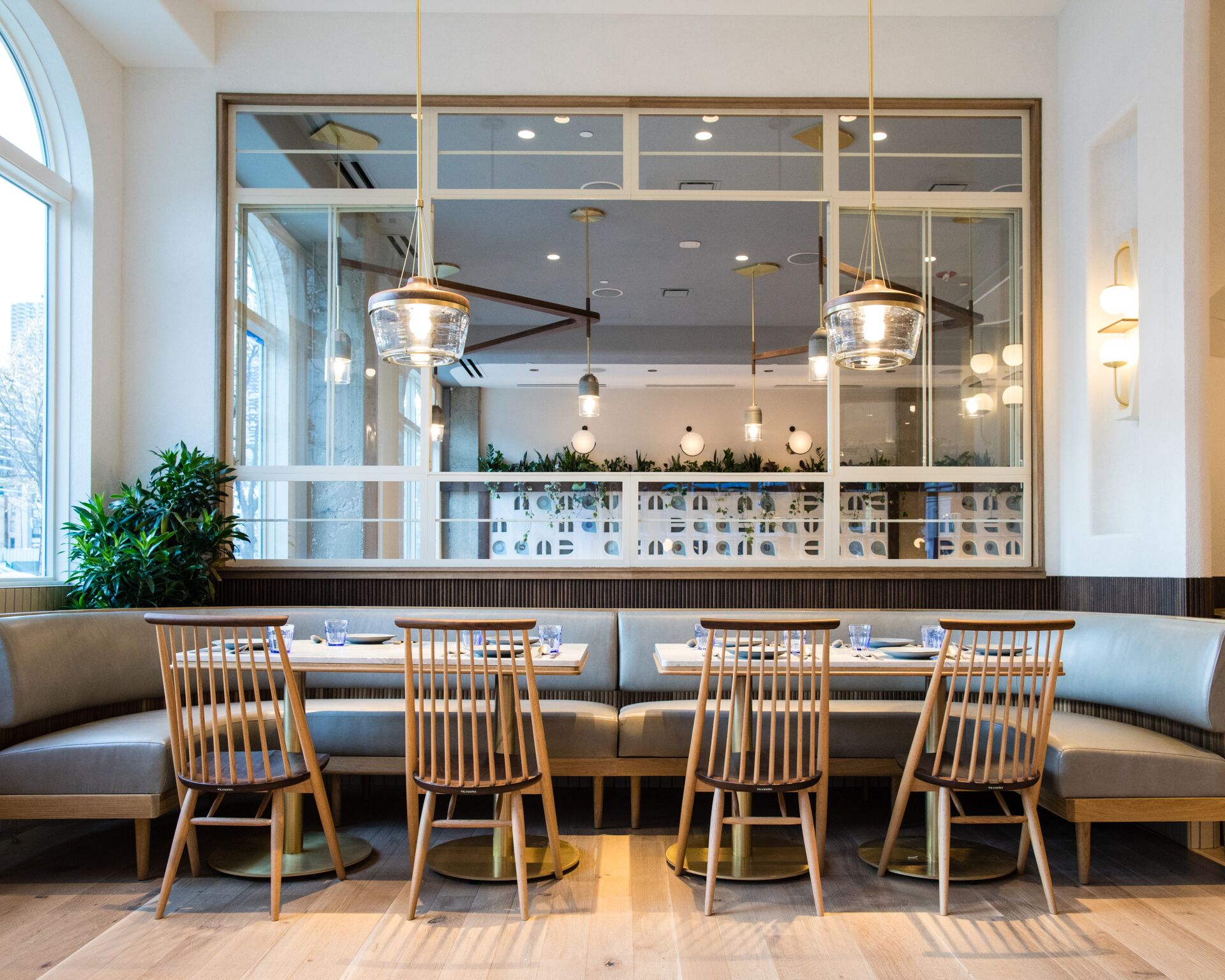
Why California cuisine, specifically in Chicago?
It’s a long, complex story. My mom and I have been cooking together since… I was born, I’m sure. She’s a Chinese immigrant. We would go to Thai stores and Chinese stores and Mexican grocery stores and Jewel Osco and health food stores and farmers markets. We cooked this cuisine that was intimately American, and calling it fusion would be a pretty big crime, you know? My mom moved to California when I was in high school, and when she did, I went out there and started working a little bit, cooking with her, and eating my way around the city. I just began to realize that the food we had been cooking here in the suburbs of Chicago was already being advanced out there. So, that’s how I’ve branded California cuisine: it’s the food that my mom and I used to cook together, ironically, in Chicago. We call Southern cuisine Southern food, or soul food; California cuisine is a brand all on its own — sort of like calling food Italian, or calling food French. It’s just that the label hasn’t really been established yet.
The other major reason is that there are these two ovens. Our wood-burning ovens were built by hand, they only cook with wood, there’s no gas assistance, there’s no gas starter. That kind of outside, woodsy feel is very California as well. [Then there is] the fact that we love our vegetables. We’re very loyal to our farmers here in Chicago, and will continue to be, but I’ve learned a lot of lessons throughout my career with One Off [Hospitality] about getting fish directly from or as close to the source as you can by dealing with purveyors close to the ocean. Most notably, Monterey Seafood out of San Francisco. We’ll just call them and they’ll kind of dictate our menu; they’re on the docks, they’re talking to fishermen, they’re one degree of separation away from fishermen. We wanted to apply that same philosophy, that same methodology, to vegetables — which is actually more difficult than you think. Everybody’s like ‘Well, there are tons of California vegetables already in Chicago,’ but the farms [in California] are little bit more specialized. So, we went to great lengths to establish relationships with specific farms, whom we really respect, like County Line Harvest and Harry’s Berries, in California. We still rely on Chicago-area farmers as we always have, but [we’re] highlighting some California produce as well.
Are there certain ingredients that you would only source from California?
No, not at all. [Procuring ingredients from elsewhere] extends the season for two months, which we love. There are some things we do way better here in the Midwest than people do in California. When melons are wonderful and beautiful here in Chicago, we’re going to be using those melons. When tomatoes are wonderful and beautiful here in Chicago, so forth and so on. With peaches, I personally think Chicago peaches are the best peaches there are. Stone fruit is one example, and I also think that apples and pears and those things, which require a little bit of chill to for optimal taste, are much better. There aren’t rules; it’s more of an aesthetic and a feel [than it is] a commitment to California produce. I am a cook in the Midwest, but, there are cooks in the Midwest who say they cook Italian food, and they import their cheese from Italy and they import their ham from Italy, and that’s just what they’re expected to do. I’m calling myself a practitioner of California cuisine in Chicago, and I’m going to get some [ingredients] from California. It’s no different from saying I’m cooking Italian food or I’m cooking Chinese food — it’s just that I’m trying to identify a new cuisine.

What are some of the most unique ingredients on your menu right now?
Harry’s Berries is probably one of the more unique ingredients. It’s a strawberry out of Oxnard, California. Everybody’s like ‘These are just so good!’ I’m like, ‘Yeah, cut ‘em, put ‘em on cheese.’ Cheating cooking (laughs).
I noticed on your menu that Harry’s Berries are paired with something called 1979 bread.
1979 bread is a bread that our baker, Greg Wade — nominated for a James Beard Award this year — makes. It’s a very flavorful, seed-heavy bread. It’s absolutely delicious. With Greg, it’s always delicious whole wheats. [1979 bread] is sustainable wheat, but he also mixes some grains into it: sunflower seeds, and other things. We have really cool ingredients, but I actually take pride in the fact that we don’t use any far-out ingredients. For example, I get offers on these wild, expensive mushrooms all the time. And I don’t like to use them, because I feel like the cremini mushroom is a beautiful thing, the oyster mushroom is a beautiful thing — when cooked correctly. We absolutely love to use something called rice koji — it’s a fermented rice product that’s full of flavor. We use dried shiitake mushrooms constantly because they have this deep, rich flavor that I love. We use a ton of delicious white soy sauce. We’re using a cheese called Stracchino on one of our pizzas that’s like a young taleggio, which I’m very excited about.
But, more than anything else this restaurant is a neighborhood restaurant. We want it to feel like a home for the people who live here. We’re not here to challenge people, we’re not here to show people what ingredients they can’t use at home, we’re here to cook really, really good and very soulful food. I think that frequently means food that’s accessible, ingredient-wise. Most people don’t have two hearth ovens in their backyard or have the other resources that I have here, [but] we want the food to to hit home. I think I’ve gotten into trouble in my career when I’ve depended too much on cool, new ingredients.
What are your five essential pantry items?
- Olive oil
- White shoyu (white soy)
- Fish sauce
- Lemon. I don’t know that my career would exist without lemon.
- A good sea salt — not finishing sea salt, but one step beyond kosher salt. A good, economical sea salt.
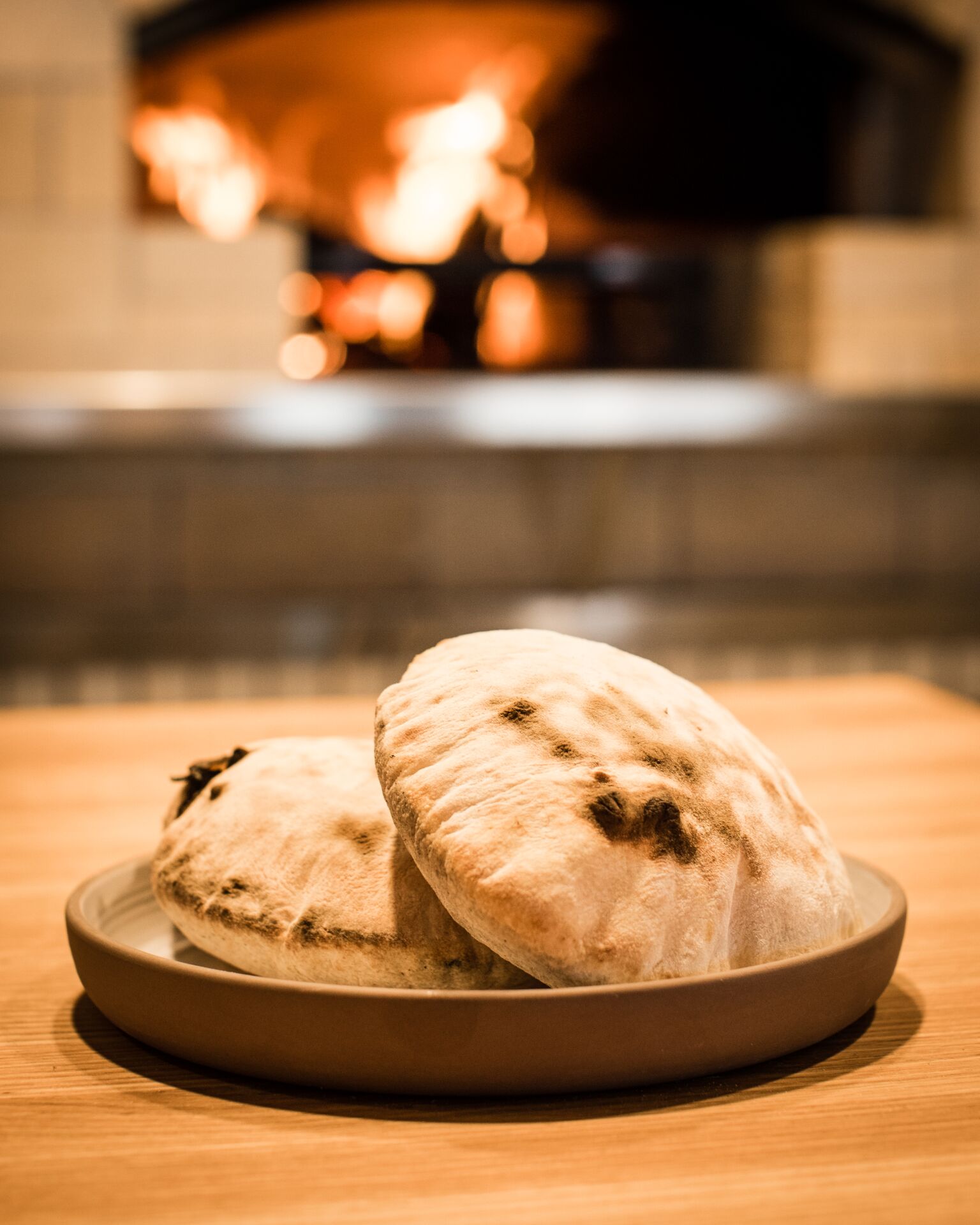
Tell me a more about your ovens.
The ovens were built by a guy from Montreal, his name is Alex Chernov, who came recommended by many people. He built both ovens by hand, brick-by-brick, in the space—they’re not churned off a line, they’re unique to the space. They are made with a combination of Missouri firestone, which is used for the body, and a firestone from Austria for the floor. One of the ovens is just used to cook pizza and pita bread. Pitas are a really important part of our cuisine here, [which] speaks to the communal nature, the shared nature, the family nature… to open up a meal by breaking bread together, I think that’s very important. The other oven is the same depth, which is six feet, but there’s a trench in the middle of it. In that trench is where we light our fire, and there’s a grill over the top of it. That oven is called the roast oven, so we cook various vegetables and fish in that oven.
Speaking of pita and ovens… What was your collaborative process like with Greg Wade when you were creating the menu?
We went through this absolutely exhaustive approach to pizza dough. [The process is] very scientific, [we would change] one variable every single day— it was very rewarding. He’s an incredible man to work with—an intellectual. I’ve never done anything so exhaustive in my cooking career, I really enjoyed working with him.
Is it true that you offer all of your pizzas, pastas, and pitas gluten-free?
Not all the pastas — only the ones that aren’t stuffed. And then all of the pizzas and pitas.
Why was that important to you?
It’s 2018 (laughs). I think the real reason is you can’t say you’re in the hospitality industry and then not offer what a large segment of your clientele wants. I think that’s bad business sense, but I also don’t think it’s very hospitable. It certainly makes things more complex for us, but it’s something we would love to do. We don’t want people with dietary restrictions to feel like they’re an exception to the rule; we don’t want to make them feel like they have to order off a different menu, or they can order less stuff. We want to make sure that we’re accommodating them when we can.
Was it a tough thing to figure out?
Not with the pasta, but for the pizza dough, I honestly thought it was going to be very difficult, but then our pastry chef Natalie Saben churned out a delicious one on her first try.
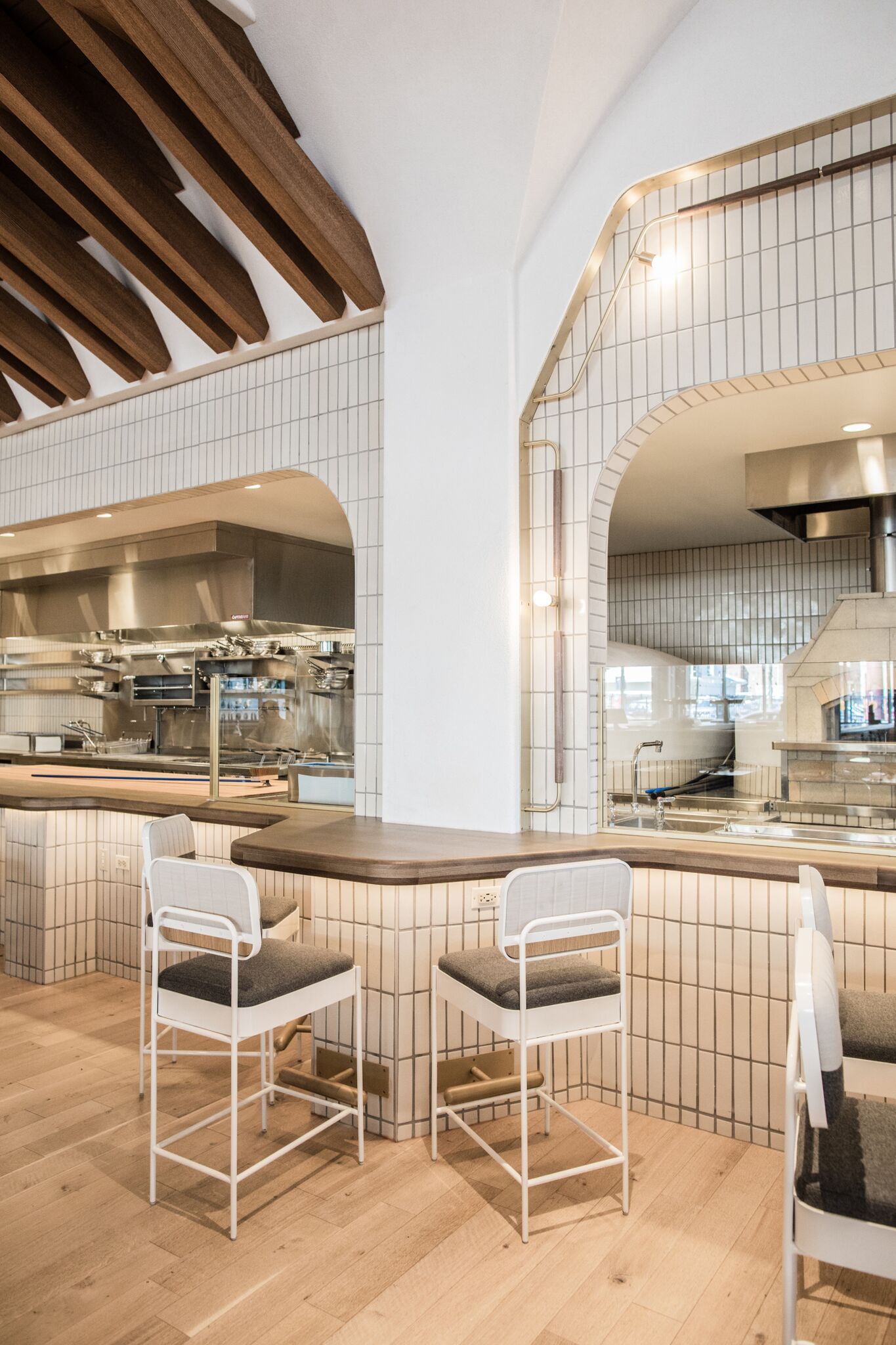
How do you want people to feel when they’re in the restaurant?
The best way to talk about this is to talk about our design process. Decisions are made residentially, which is to say, anytime we came to a design impasse, our prevailing thought is to make the decision based on what one would do in a home. We want people to feel like they can come back here again and again, that’s the goal. Just like with the food, we don’t want to challenge people when they walk into the space. For this concept, we wanted to keep it light, we wanted it to feel like a home… As opposed to doing a regular kitchen counter, which would be at bar height and would [tower over] the counter where the cooks make the food, I wanted it to feel like an island in somebody’s home — because, where do you always gather for a party? Everybody’s always around the kitchen island at a party. So, the kitchen counter and the dining room counter are at the same level. We raised all the tables in that back section of the restaurant to be counter-height as well, so it feels super casual back there.
If one of your friends was coming in for dinner for the first time, what are the dishes on the current menu you’d want to be sure they try?
All of them!
I would insist on making them a pita to begin the meal. I genuinely believe that’s the most important part of the experience here. The black cod and the strawberries are certainly highlights. I love the aguachile. And then, although everything is good, the duck collective. The duck that comes with a baked, kebab-like pie; aged duck breast; and sauces and herbs is definitely one of my favorites.

Are there any chefs or restaurants on the west coast, or really anywhere, that have been particularly inspiring for Pacific Standard Time?
Oh, yeah, I mean, Stuart Brioza is leading an inspirational charge right now at State Bird Provisions and The Progress. He would definitely be number one on my list out there. Craig Stoll at Delfina — it’s one of my favorite restaurants on Earth, I go there every time I’m there. The guys at Tartine are really bringing gluten back into style — I love that… What else is out there that I’ve absolutely adored, lately? I don’t know LA that well yet. I’m learning more and more about LA as I go, so my heart is a little more in San Francisco, but I don’t want to seem like I’m shunning LA, I just don’t know it well enough.
If you could collaborate with any chef, or if you were throwing a dinner party, who would you want to cook alongside?
Anyone in the world? Eric Ripert [Le Bernardin]. Hands-down, no question.
What are your favorite places to eat at in Chicago?
My favorite place closed recently, RIP. Sumi Robata Bar. I don’t do that much eating out these days (laughs). There are a couple places in my neighborhood, a place called HaiSous. There’s another place called S.K.Y. that I really love. They’re both incredible restaurants in Pilsen, a neighborhood here in Chicago. They’re both cooking incredible food, they’re both [run by] young business people out there trying to do it on their own, which I respect more than anything else. And then, Le Bouchon — it’s been around for ages and I crave it almost every day.
What about in other cities?
Not that it needs any more press, but Gramercy Tavern, in New York, is just so good. We had a dinner at Olmsted in New York during the research development for this project that was just absolutely delicious. I loved, loved, loved Emmer & Rye in Austin when I was there recently.
Discover More


